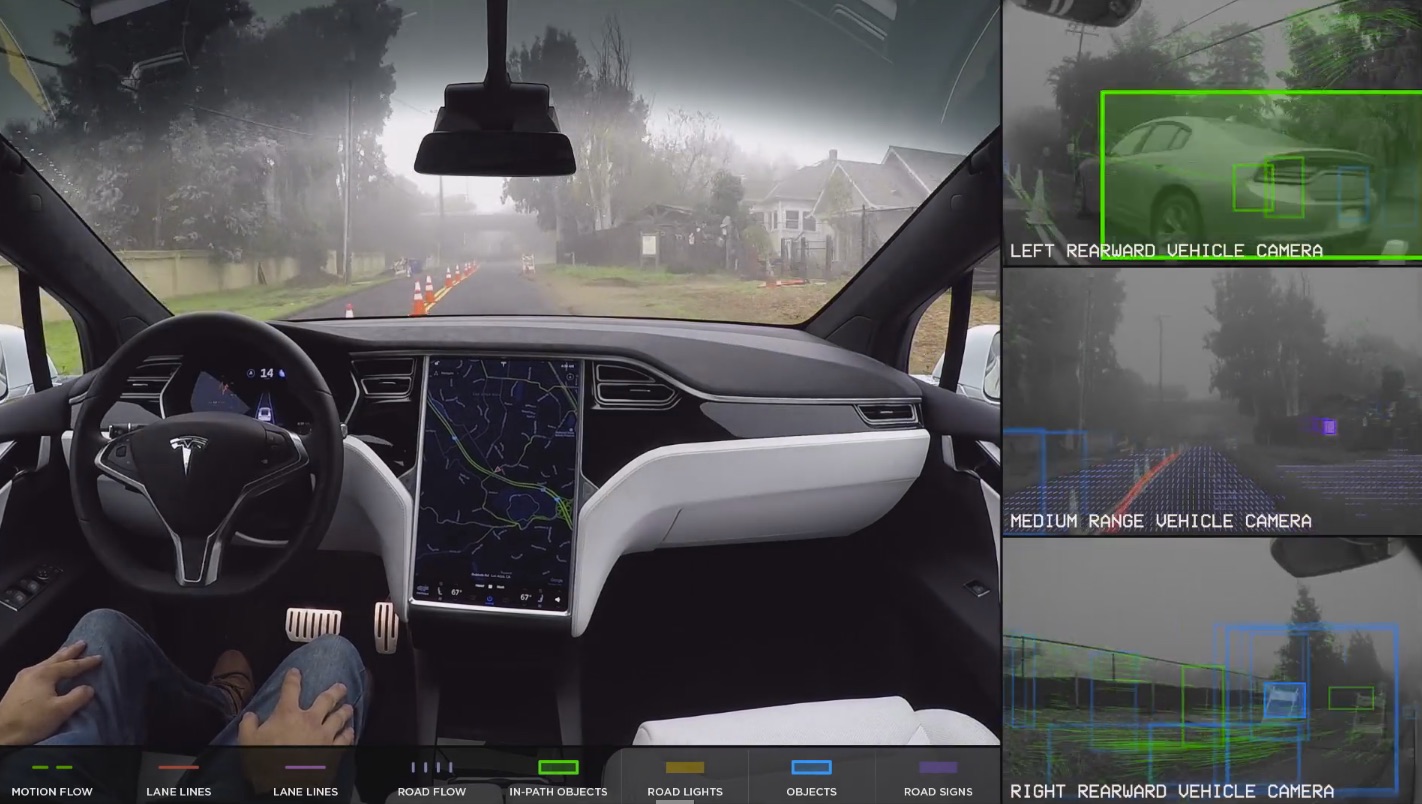
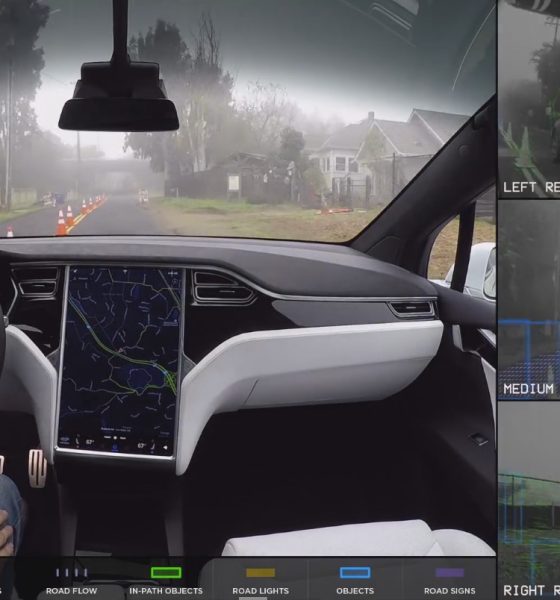
News
Tesla’s race to autonomy: No one said it would be easy
Need to type up a quick memo before work? Forgot to eat breakfast before driving to school? In just a few years, driving may be a more hands-off endeavor than ever before if companies like Tesla, Uber, Volvo, Alphabet, General Motors, or Ford have anything to do about it. You could be a passenger in your own self-driving car, weaving in and out of traffic with ease and parallel parking like a pro every time. It seems like most every company even tangentially related to cars is pouring money into the race for autonomy.
The freedom of self-driving cars is still heavily dependent on regulatory whim and technological availability, but some are setting demanding goals in an effort to finish first in that race. Tesla for example, plans to showcase its Full Self-Driving Capability by driving one of its fleet cars from California to New York, without human involvement, by the end of this year. But their competitors are moneyed, motivated and many.
The Self-Driving Battle Arena
For Uber, success in autonomous driving research could be a sweet distraction from the recent troubles of the company. Its self-driving program has been based in Pittsburgh, right next to Carnegie Mellon with its highly regarded robotics program since it began in 2015. Then-CEO Travis Kalanick was determined to stay on top of the industry. “It starts with understand that the world is going to go self-driving and autonomous,” Kalanick said in a 2016 interview with Business Insider. “So if that’s happening, what would happen if we weren’t a part of that future? If we weren’t part of the autonomy thing? Then the future passes us by basically, in a very expeditious and efficient way.”
Plagued by lawsuits, investigations, and subsequent executive upheaval that saw Kalanick’s resignation from the enterprise he founded, Uber is still one of the best places for researchers and engineers to work on their projects. The company has armies of vehicles across the country, vast datasets of information from the millions of miles its cars have covered through its ride-hailing branch, and the money to fund its engineers’ work.
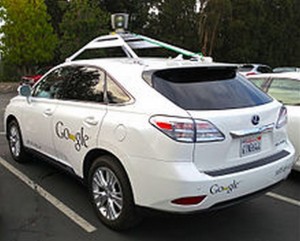 This does not mean that Uber’s self-driving program has remained untouched. Waymo, the autonomous car division of Google’s parent company, Alphabet, is currently suing Uber over files allegedly by Anthony Levandowski when he moved from Waymo to Uber. According to Reuters, in recent court filings, Waymo has claimed that Uber knew of the stolen intellectual property and even conspired with Levandowski to use it. Uber denies the allegations and actually fired Levandowski on May 30, claiming he had not cooperated with their internal investigation– and probably hoping to win some goodwill from the judge who has already said Waymo had produced a convincing case.
This does not mean that Uber’s self-driving program has remained untouched. Waymo, the autonomous car division of Google’s parent company, Alphabet, is currently suing Uber over files allegedly by Anthony Levandowski when he moved from Waymo to Uber. According to Reuters, in recent court filings, Waymo has claimed that Uber knew of the stolen intellectual property and even conspired with Levandowski to use it. Uber denies the allegations and actually fired Levandowski on May 30, claiming he had not cooperated with their internal investigation– and probably hoping to win some goodwill from the judge who has already said Waymo had produced a convincing case.
It is unlikely the scandals will affect the decisions of most researchers to stay with the company. As Wired’s Aarian Marshall points out, the long timeline of building a safe autonomous car makes engineers less likely to leave at a moment’s notice in a period of executive instability. And the branch’s position in Pittsburgh rather than Silicon Valley means the roiling news is less sensationalized and the researchers less affected. The ride-sharing company’s failure to live up to certain promises, including backing one of Pittsburgh’s federal grant proposals or hiring from neighborhoods near its test tracks, have drawn ire from many local activists and politicians, as reported by the New York Times. Even so, it has helped the city break away from its steel past and into a high-tech future.
Meanwhile, Uber’s main competitor in the ride-sharing industry, Lyft, has been making strides to continue chipping away Uber’s monopoly in any field, including self-driving cars, as Uber deals with scandal after scandal. As reported by Recode, Lyft is steadily gaining ground on Uber in terms of the share of ride-hailing app downloads as its ratings in the IOS App Store rise and Uber’s falls. This recent shift in market share comes as Waymo and Lyft start a new partnership that will combine Waymo’s advanced technology with Lyft’s vast amounts of data on people, where and how they drive. “Lyft’s vision and commitment to improving the ways cities move with help Waymo’s self-driving technology reach more people, in more places,” a Waymo spokesperson told Wired. Extending Waymo’s dataset beyond the few cities, including Phoenix and Pittsburgh, allows the enterprise to collect the small details of average people’s driving habits much faster and accurately than its test drives around Silicon Valley will.
But despite Waymo’s eight years of self-driving research, it still has to play catch up to Uber in some regards. Waymo just started testing autonomous trucks earlier this month, while Uber first used a self-driving truck to deliver a shipment last August, advancing its technology quickly after it snatched up the self-driving truck startup Otto—founded by Anthony Levandowski after he left Waymo— in January of 2016. Yet, Waymo has the benefit of its parent company’s huge cash reserves and data.
Growing Pains
Tesla is moving its autonomous program forward at an increasingly demanding pace, trying to meet that goal of driving from Los Angeles to New York by the end of this year. It, like Uber, is going through some executive shakeup: after just six months with Tesla, Chris Lattner, Vice President of its Autopilot Software program, left the company after reported tensions with Elon Musk. Tesla explained that the former Apple engineer was not a “good fit.” It stands to mention that working under Musk is notoriously a high-pressure gig. According to LinkedIn Insights, the average tenure of a Tesla employee is only 2.2 years, while companies like General Motors keeps its employees for almost 9. But Lattner’s exit is just one example of many of talented Tesla self-driving engineers leaving the company or being poached by the competition, like Waymo.
While Autopilot can do many impressive things— change lanes, brake before obstacles, and generally act as a rational human driver— it is far from perfect. The program is still technically in “public beta” testing, and rated by the National Transportation Safety Board as a 2 out of 5 on its scale of autonomy.
The fatal crash of a Model S owner Joshua Brown in May 2016 serves as a good reminder that drivers are cautioned to pay attention and keep their hands on the wheel at all times while using Autopilot. Tesla’s driving-assist feature, at the time, could not distinguish the difference between the bright sky and the white truck. Tesla and Autopilot were cleared of responsibility by the NTSB because Brown was given several warnings to take back control of the wheel. But it is a poignant example that Autopilot does not function as a self-driving car and still requires a driver’s full attention. After the accident, Tesla was forced to start developing its own hardware for Autopilot. Mobileye, which previously supplied Tesla’s image processing chips, ended its partnership in a public spat with Musk.
According to Lattner’s public resume, the transition to its own hardware presented “many tough challenges” to the Tesla team. Musk commented to shareholders in June that Tesla is “almost there in terms of exceeding the ability” of the original hardware. All of Tesla’s vehicles in production, including the upcoming Model 3, have the capability to engage Autopilot (for a price) and the necessary hardware to enable full self-driving someday. Autopilot will continue using the camera-based system that Tesla swears by, even as most of the industry focuses on developing LiDAR technology based on light and lasers.
And while Tesla prefers to work mostly alone, the rest of the industry is also pairing up, making deals, partnerships, and contracts between manufacturers, data giants, and service teams. Musk is taking a move out of Steve Jobs’ playbook by vertically integrating everything within the business, from top-to-bottom. Waymo and Honda, Lyft and Waymo, Autoliv and Volvo, Hertz and Apple, Intel and Mobileye, Audi and NVIDIA, and almost every other combination you could think of. Predictions for when the first company will reach the finish line range from within a year to two decades from now. And even if the car is made, there is still the question of if cities and states will allow autonomous vehicles to drive on their streets. The technology is closer than ever, but for now, please keep your eyes on the road.

Elon Musk
Tesla CEO Elon Musk sends rivals dire warning about Full Self-Driving
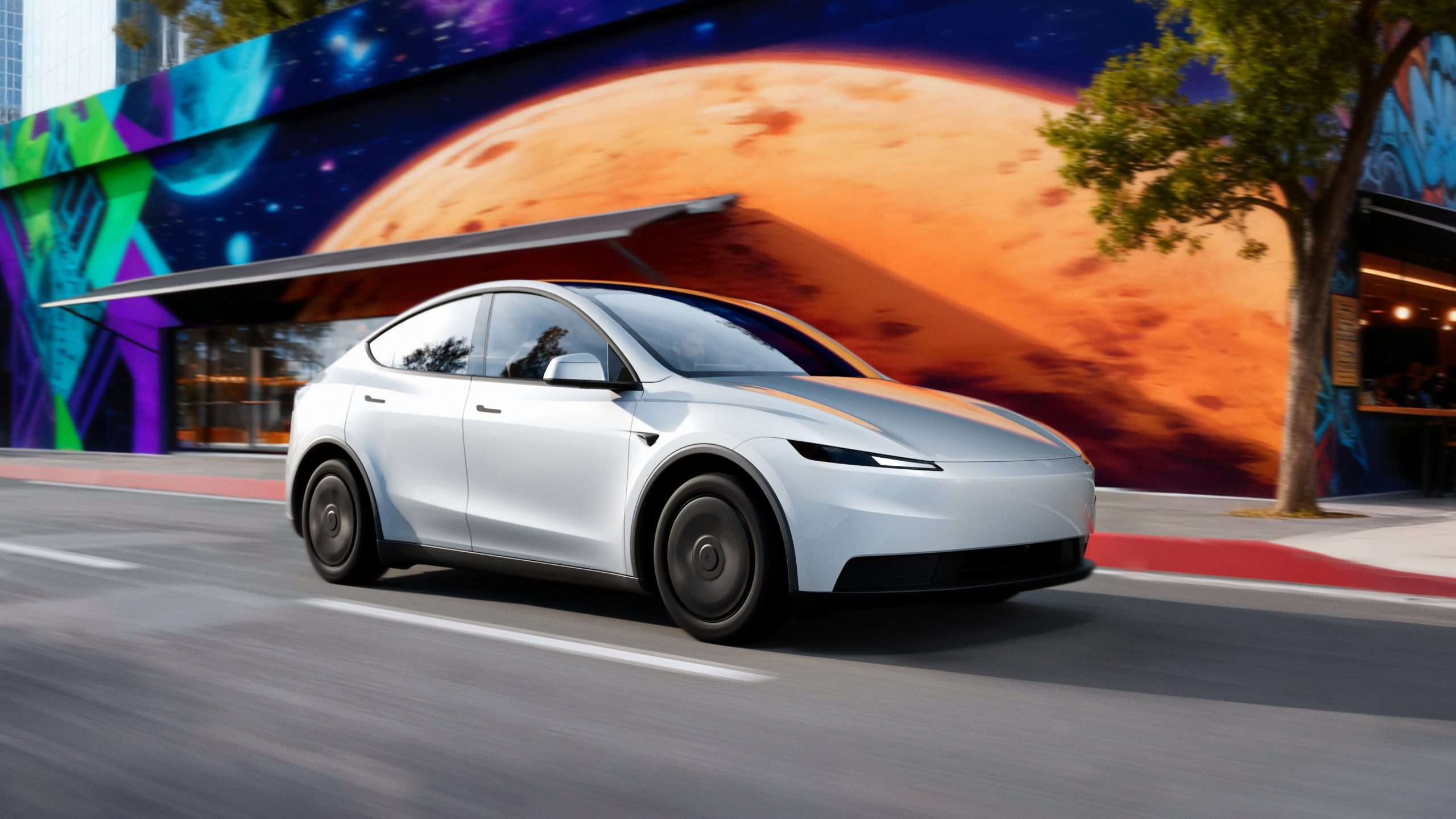
Tesla CEO Elon Musk revealed today on the social media platform X that legacy automakers, such as Ford, General Motors, and Stellantis, do not want to license the company’s Full Self-Driving suite, at least not without a long list of their own terms.
“I’ve tried to warn them and even offered to license Tesla FSD, but they don’t want it! Crazy,” Musk said on X. “When legacy auto does occasionally reach out, they tepidly discuss implementing FSD for a tiny program in 5 years with unworkable requirements for Tesla, so pointless.”
I’ve tried to warn them and even offered to license Tesla FSD, but they don’t want it! Crazy …
When legacy auto does occasionally reach out, they tepidly discuss implementing FSD for a tiny program in 5 years with unworkable requirements for Tesla, so pointless. 🤷♂️
🦕 🦕
— Elon Musk (@elonmusk) November 24, 2025
Musk made the remark in response to a note we wrote about earlier today from Melius Research, in which analyst Rob Wertheimer said, “Our point is not that Tesla is at risk, it’s that everybody else is,” in terms of autonomy and self-driving development.
Wertheimer believes there are hundreds of billions of dollars in value headed toward Tesla’s way because of its prowess with FSD.
A few years ago, Musk first remarked that Tesla was in early talks with one legacy automaker regarding licensing Full Self-Driving for its vehicles. Tesla never confirmed which company it was, but given Musk’s ongoing talks with Ford CEO Jim Farley at the time, it seemed the Detroit-based automaker was the likely suspect.
Tesla’s Elon Musk reiterates FSD licensing offer for other automakers
Ford has been perhaps the most aggressive legacy automaker in terms of its EV efforts, but it recently scaled back its electric offensive due to profitability issues and weak demand. It simply was not making enough vehicles, nor selling the volume needed to turn a profit.
Musk truly believes that many of the companies that turn their backs on FSD now will suffer in the future, especially considering the increased chance it could be a parallel to what has happened with EV efforts for many of these companies.
Unfortunately, they got started too late and are now playing catch-up with Tesla, XPeng, BYD, and the other dominating forces in EVs across the globe.
News
Tesla backtracks on strange Nav feature after numerous complaints

Tesla is backtracking on a strange adjustment it made to its in-car Navigation feature after numerous complaints from owners convinced the company to make a change.
Tesla’s in-car Navigation is catered to its vehicles, as it routes Supercharging stops and preps your vehicle for charging with preconditioning. It is also very intuitive, and features other things like weather radar and a detailed map outlining points of interest.
However, a recent change to the Navigation by Tesla did not go unnoticed, and owners were really upset about it.
For trips that required multiple Supercharger stops, Tesla decided to implement a naming change, which did not show the city or state of each charging stop. Instead, it just showed the business where the Supercharger was located, giving many owners an unwelcome surprise.
However, Tesla’s Director of Supercharging, Max de Zegher, admitted the update was a “big mistake on our end,” and made a change that rolled out within 24 hours:
The naming change should have happened at once, instead of in 2 sequential steps. That was a big miss on our end. We do listen to the community and we do course-correct fast. The accelerated fix rolled out last night. The Tesla App is updated and most in-car touchscreens should…
— Max (@MdeZegher) November 20, 2025
The lack of a name for the city where a Supercharging stop would be made caused some confusion for owners in the short term. Some drivers argued that it was more difficult to make stops at some familiar locations that were special to them. Others were not too keen on not knowing where they were going to be along their trip.
Tesla was quick to scramble to resolve this issue, and it did a great job of rolling it out in an expedited manner, as de Zegher said that most in-car touch screens would notice the fix within one day of the change being rolled out.
Additionally, there will be even more improvements in December, as Tesla plans to show the common name/amenity below the site name as well, which will give people a better idea of what to expect when they arrive at a Supercharger.
News
Dutch regulator RDW confirms Tesla FSD February 2026 target
The regulator emphasized that safety, not public pressure, will decide whether FSD receives authorization for use in Europe.
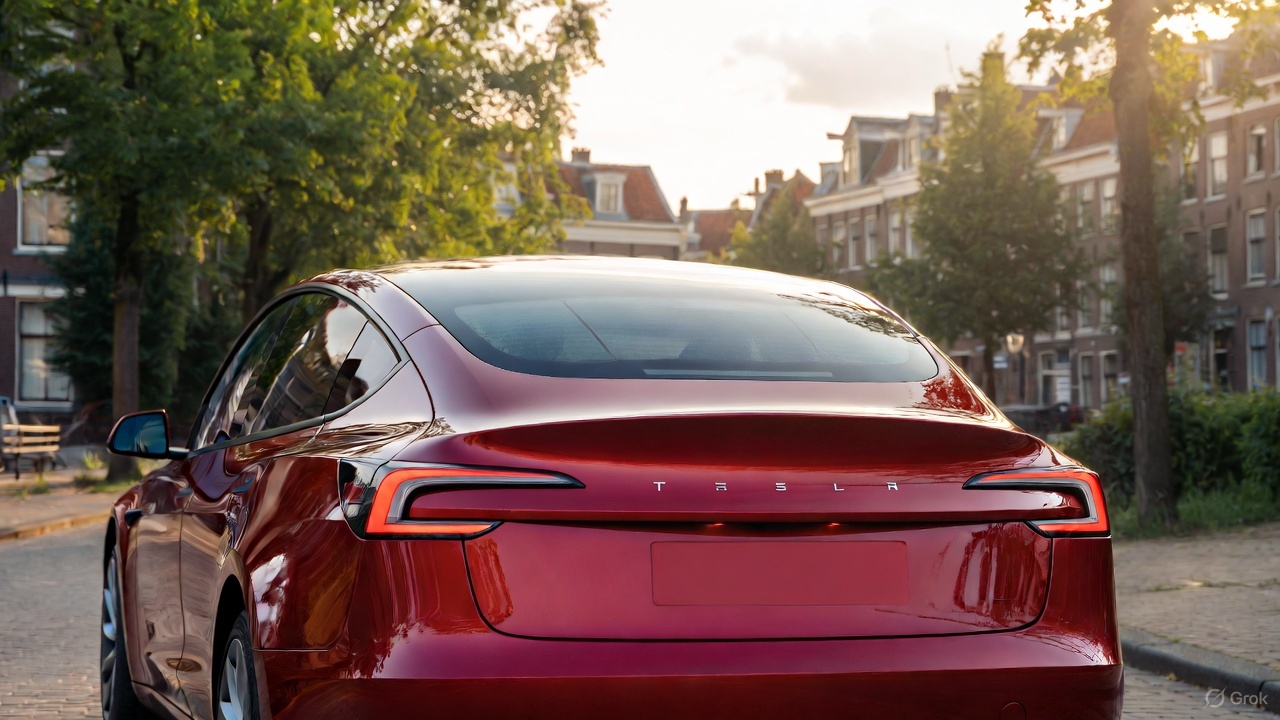
The Dutch vehicle authority RDW responded to Tesla’s recent updates about its efforts to bring Full Self-Driving (Supervised) in Europe, confirming that February 2026 remains the target month for Tesla to demonstrate regulatory compliance.
While acknowledging the tentative schedule with Tesla, the regulator emphasized that safety, not public pressure, will decide whether FSD receives authorization for use in Europe.
RDW confirms 2026 target, warns Feb 2026 timeline is not guaranteed
In its response, which was posted on its official website, the RDW clarified that it does not disclose details about ongoing manufacturer applications due to competitive sensitivity. However, the agency confirmed that both parties have agreed on a February 2026 window during which Tesla is expected to show that FSD (Supervised) can meet required safety and compliance standards. Whether Tesla can satisfy those conditions within the timeline “remains to be seen,” RDW added.
RDW also directly addressed Tesla’s social media request encouraging drivers to contact the regulator to express support. While thanking those who already reached out, RDW asked the public to stop contacting them, noting these messages burden customer-service resources and have no influence on the approval process.
“In the message on X, Tesla calls on Tesla drivers to thank the RDW and to express their enthusiasm about this planning to us by contacting us. We thank everyone who has already done so, and would like to ask everyone not to contact us about this. It takes up unnecessary time for our customer service. Moreover, this will have no influence on whether or not the planning is met,” the RDW wrote.
The RDW shares insights on EU approval requirements
The RDW further outlined how new technology enters the European market when no existing legislation directly covers it. Under EU Regulation 2018/858, a manufacturer may seek an exemption for unregulated features such as advanced driver assistance systems. The process requires a Member State, in this case the Netherlands, to submit a formal request to the European Commission on the manufacturer’s behalf.
Approval then moves to a committee vote. A majority in favor would grant EU-wide authorization, allowing the technology across all Member States. If the vote fails, the exemption is valid only within the Netherlands, and individual countries must decide whether to accept it independently.
Before any exemption request can be filed, Tesla must complete a comprehensive type-approval process with the RDW, including controlled on-road testing. Provided that FSD Supervised passes these regulatory evaluations, the exemption could be submitted for broader EU consideration.











